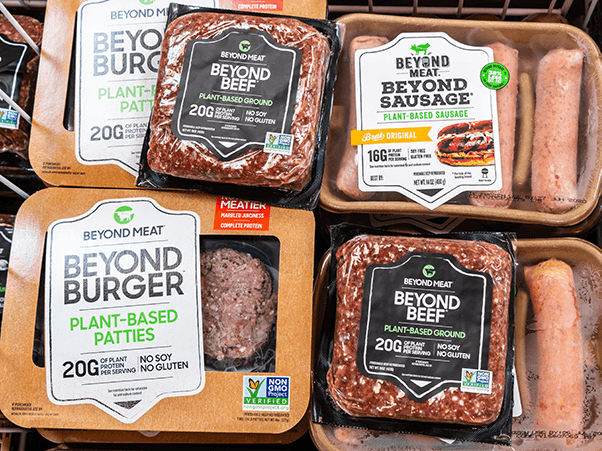
Plant-based foods are generally classified into fruits, vegetables, legumes, grains, nuts, and seeds; their derived processed counterparts such as breads, pasta, breakfast cereals, cooked and fermented vegetables and legumes, and fruit purées, juices, and jams; and their derived ingredients such as oleaginous seed–derived oils, sugars, and some herbs and spices. What differentiates them from animal-based foods is that their fiber fraction is made of indigestible compounds, mainly cellulose, hemicellulose, pectins, and/or resistant starch. Among grain products, legumes, cereals/pseudocereals, and nuts/seeds are characterized by their high carbohydrate, protein, and lipid contents, respectively. In addition to fiber, plant-based foods all possess macro- (proteins, lipids, and carbohydrates), micro- (minerals, trace elements, and vitamins), and phytonutrients (e.g., polyphenols and carotenoids). Each of them helps the plant to survive within its environment and reproduce itself.
Plant-based foods are a good source of lipids. The food structure features influence the rate at which the lipid fraction of a plant-based diet is digested. For instance, the release of lipids in almonds has been shown to be increased by chewing (Ellis et al., 2004). The proportion of lipid lost in the stool was reported to be higher after 10 chews compared to after 40 chews in humans (Cassady et al., 2009). Higher fat losses have also been found after eating whole peanut seeds compared with the consumption of peanut oil, butter, or flour, which proposes the possibility of reduced lipid availability (Traoret et al., 2008). These findings suggest that most oilseeds could exhibit a similar fate in terms of lipid digestion depending on food structure integrity even though little is known about the effect of plant-based food structure on lipid bioavailability in humans (Fardet, 2017).
The future of nutrition by Plant-based foods
Plant-based foods have broken through to the mainstream in recent years. Not to be confused with vegetarian foods per se, the plant-based movement has focused on replacements for meats, butter, milk, and eggs. For example, the Impossible Burger uses textured wheat protein, coconut oil, potato protein, yeast, soy protein, and gums to achieve a taste and texture similar to that of a ground beef patty. Milk replacements have exploded on the scene with variations of nuts, fruits, and grains as their source. At the same time, dairy milk consumption has dropped off precipitously, leading to bankruptcies within the dairy industry.
The emergence of plant-based products has led to significant litigation activity as the viability of traditional meats and dairy products are challenged. Meat and dairy industry groups have argued that names such as “burger” and “milk” should not be allowed for these replacement products and have called for the Food and Drug Association (FDA) to intervene. With soy milk having been commercially available for over 50 years, it would seem unlikely that the FDA will step forward to defend the use of “milk” or “meat” naming in any meaningful way. Dairy and meat companies that have embraced the plant-based wave rather than fighting it through litigation are now prospering. Danone North America, for example, has a portfolio that includes dairy yogurt as well as plant-based milks and desserts.
While plant-based foods tend to have a positive health halo in the minds of consumers, not all of them have solid nutrition credentials. The inclusion of negative nutrients such as saturated fats, sodium, and simple sugars is, in many cases, higher than that of the product it is intended to replace. Caveat emptor applies in this case, with the burden being placed on the consumer to read the label and make an informed decision.
From a public health point of view, the affordability of plant-based foods is initially poor, but improves as market share increases. As the cost of dairy and beef production increases, it is very possible that plant-based foods will become more affordable and provide a meaningful source of protein across all demographics.
Reference:
1. https://www.eatingwell.com/article/7878282/complete-plant-based-diet-grocery-list/
2. https://www.sciencedirect.com/topics/agricultural-and-biological-sciences/plant-based-food



